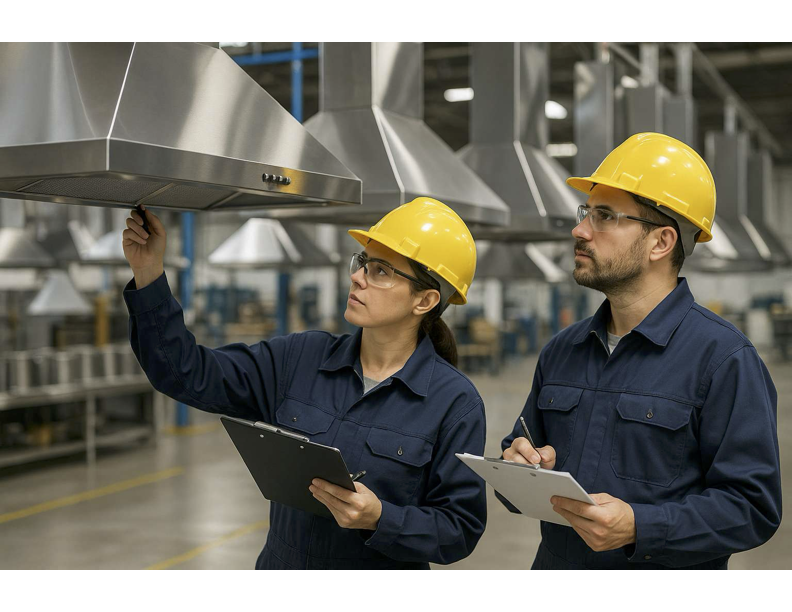When it comes to commercial kitchens, safety and performance aren't optional — they're mandatory. Nowhere is this more critical than in the design and manufacturing of kitchen hoods. These systems are the frontline defense against fire hazards, grease buildup, and poor air quality. And yet, not all kitchen hoods are created equal. The difference between a reliable system and a liability often comes down to one thing: quality control.
What’s at Stake?
In a commercial kitchen, everything runs hot. Literally. Heat, smoke, grease, and airborne contaminants are generated constantly. If the exhaust hood isn’t engineered and built to handle that stress — every single day — it becomes a weak point. That’s not just bad for business. It’s a potential code violation, a health hazard, and in the worst cases, a fire risk.
The Role of Quality Control
Quality control (QC) in kitchen hood manufacturing is more than a box to check. It’s a system of checks and balances to ensure every unit meets performance, safety, and durability standards. A robust QC program will cover:
1. Materials Inspection
Before anything is assembled, the materials must meet specific criteria. Is the stainless steel corrosion-resistant? Is the gauge correct for structural integrity? QC teams verify specs at the door.
2. Welding & Assembly Standards
Welds need to be tight, clean, and consistent. Improper welding can lead to leaks, airflow problems, or structural failure. Quality control inspectors examine weld lines, fasteners, and joints throughout the build process.
3. Airflow & Capture Testing
A hood’s job is to capture and remove contaminated air. QC involves testing airflow rates, static pressure, and capture efficiency. Any hood that underperforms goes back for correction — no shortcuts.
4. Grease Containment Systems
If a hood can’t contain grease, it's a fire waiting to happen. QC checks confirm that filters are properly fitted, removable, and cleanable — and that drainage systems are fully functional.
5. Code Compliance
UL listings, NFPA standards, local building codes — these aren’t suggestions. Quality control ensures that every unit is manufactured to meet or exceed the latest safety regulations.
Why Manufacturers Cut Corners — and Why You Shouldn’t
Some manufacturers skip steps or cheap out on materials to save a few bucks. They bank on customers not knowing the difference — until something goes wrong. But in this business, cutting corners isn’t just unethical; it’s dangerous.
Smart manufacturers understand that a strong QC process is not an expense — it’s an investment. A reputation for quality leads to fewer returns, stronger customer trust, and long-term market credibility.
Final Word: Build It Right or Don’t Build It at All
Commercial kitchen hoods aren’t just another appliance — they’re safety-critical infrastructure. That means quality control can’t be a one-time event; it has to be baked into every stage of manufacturing. If you're in the business of building or buying these systems, make quality control your deal-breaker. Because in the high-stakes world of commercial kitchens, there’s no room for failure.

